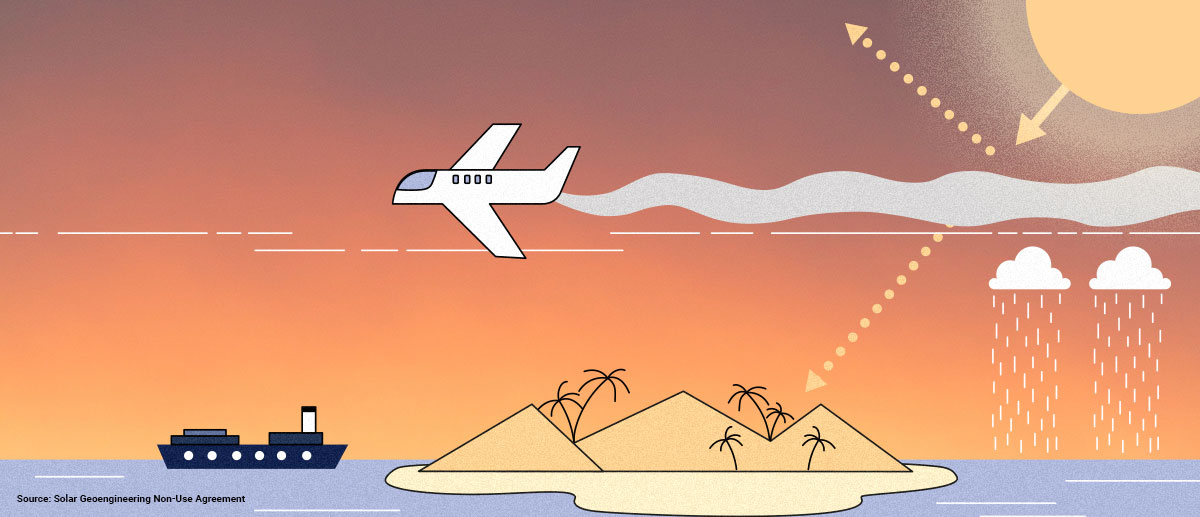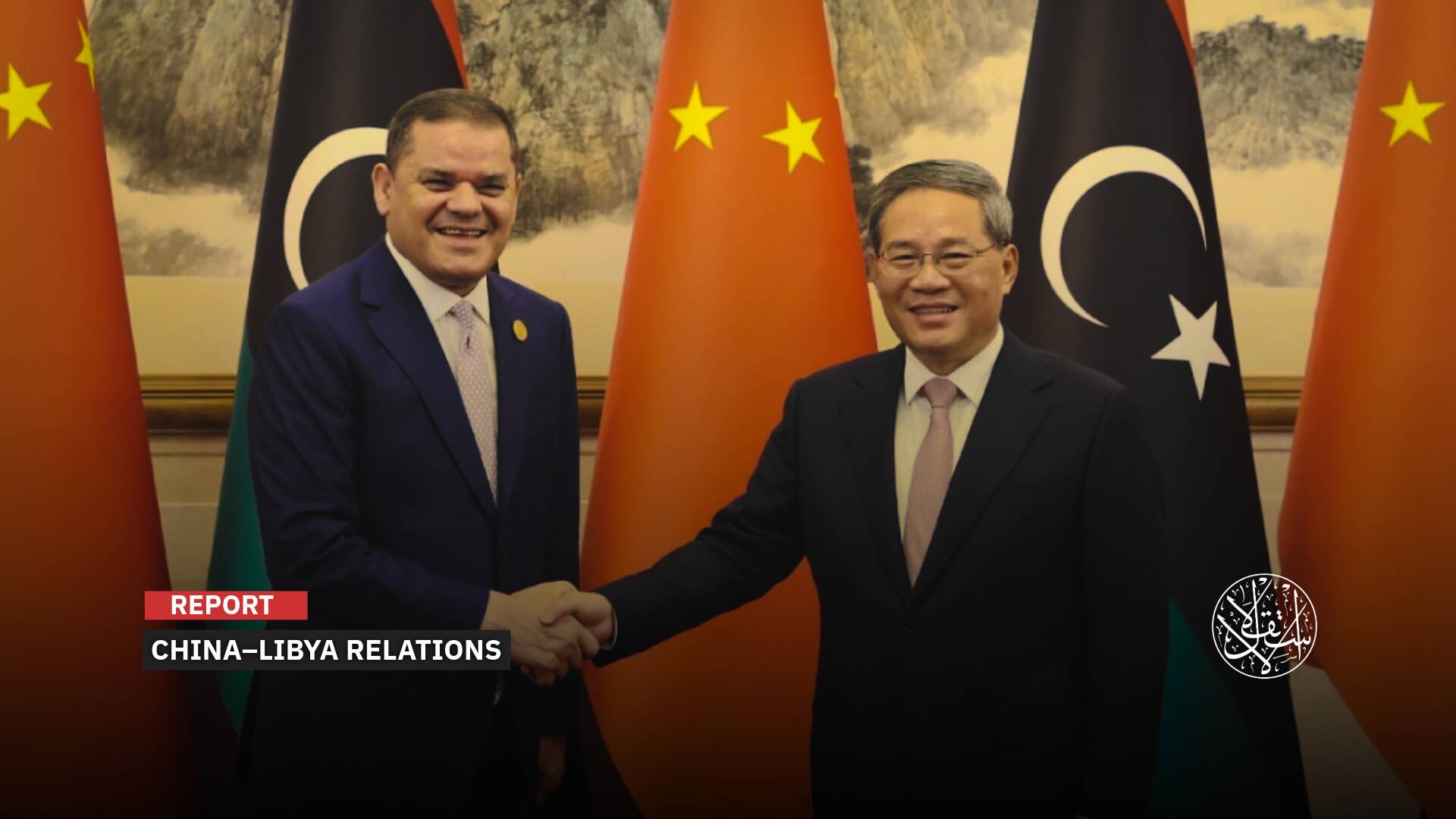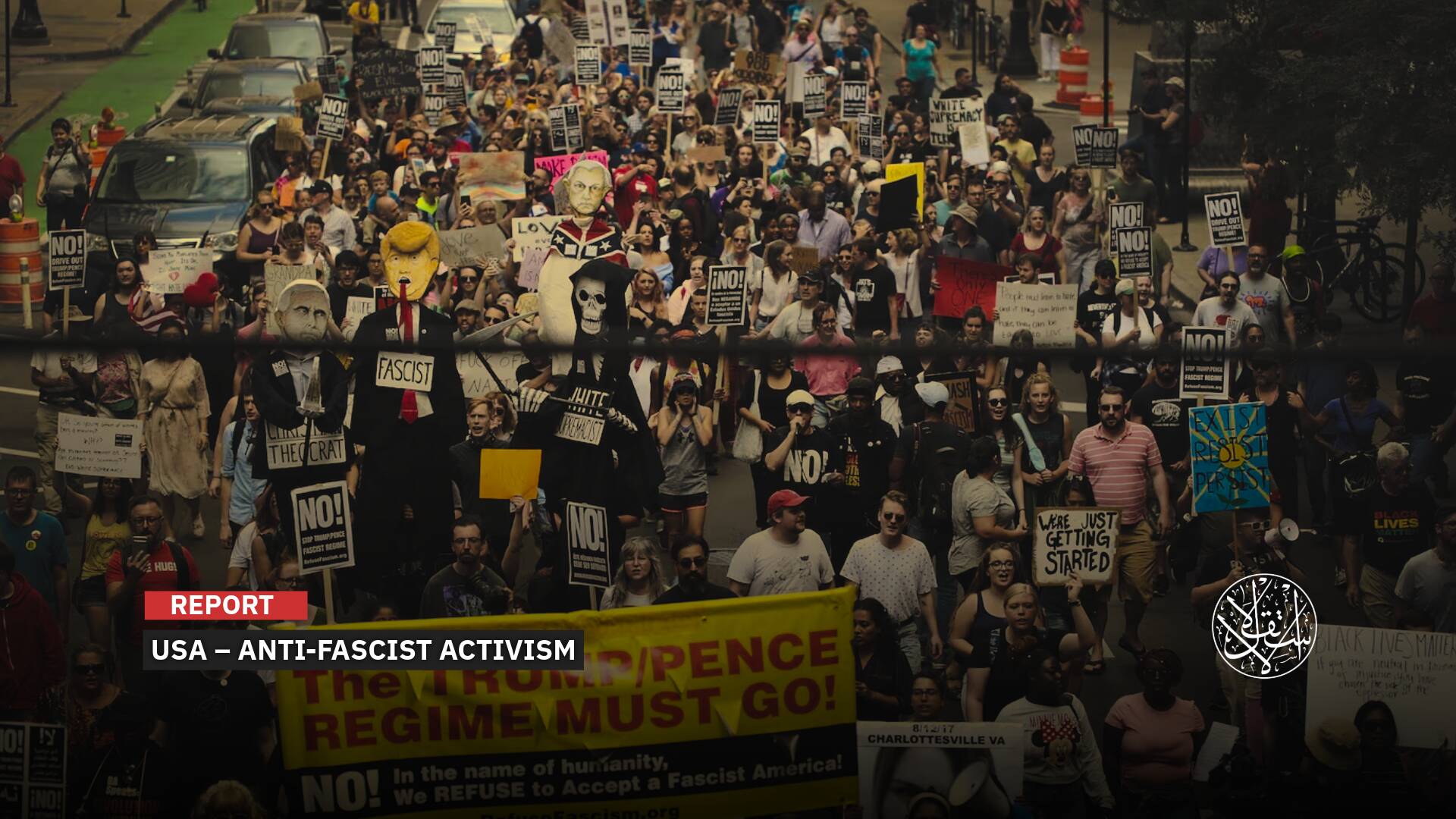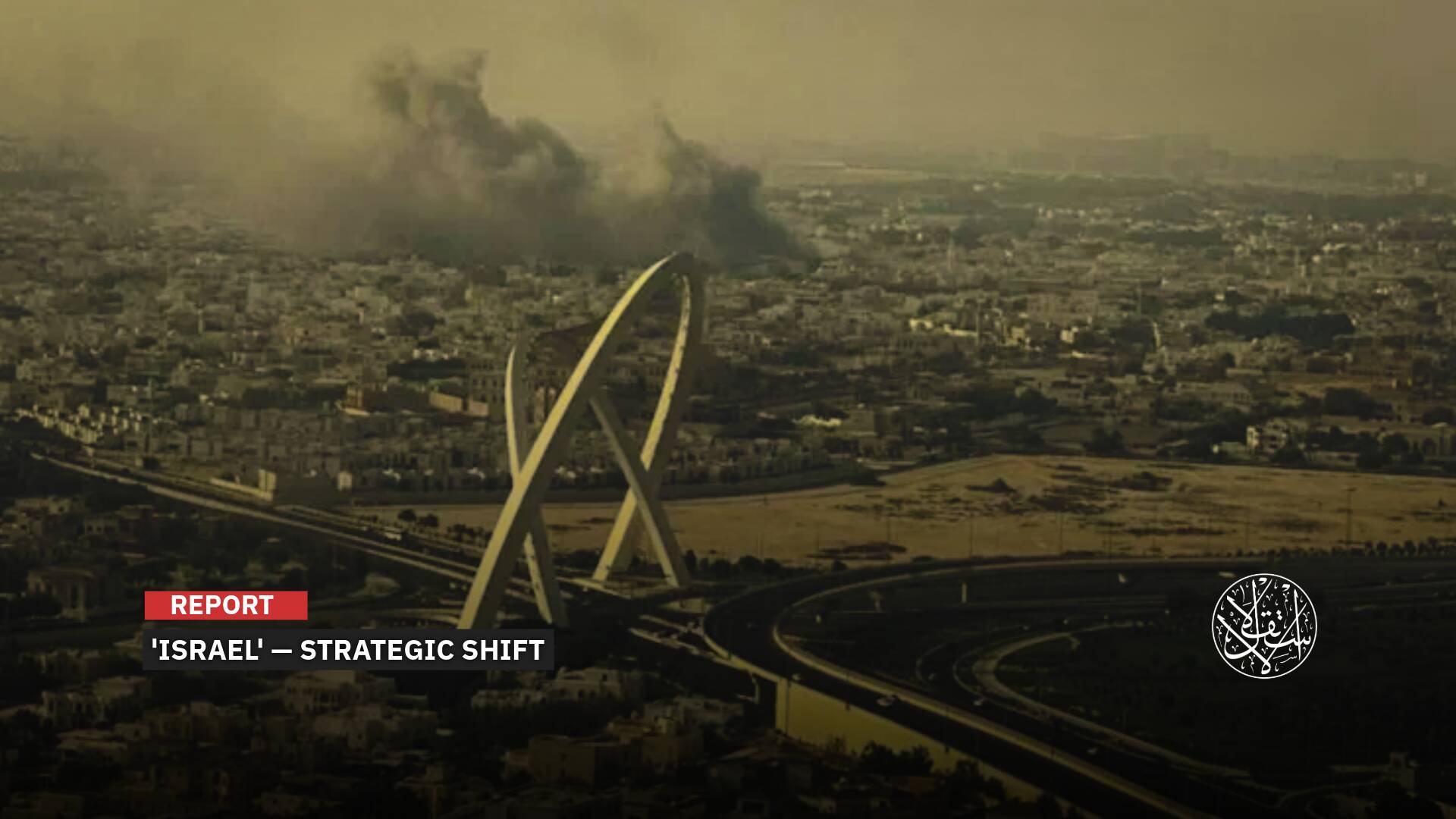Solar Geoengineering: Will It Trigger a Conflict Between Billionaires?

After cloud wars, cloud theft, and fears that artificial precipitation could become a weapon in wars, talk of solar geoengineering has spread and may trigger a world war.
It sounds like something out of science fiction, but imagine a country suffering from heat waves, floods, or crop damage deciding to send a fleet of planes to spray a fine mist that blocks the sun’s rays in the Earth’s atmosphere.
The country succeeds in reducing temperatures and providing relief to thirsty residents, but other countries see it as a threat to their citizens and a climate danger that harms them, so they prepare for military action.
Great Risks
This scenario was envisioned by The Washington Post in a report published on February 27, 2023, on the latest advances in sun blocking after cloud seeding and its potential consequences.
Scientists say that the technology needed to penetrate the atmosphere and block the sun is not complicated, as planes will spray sulfur in the sky at high altitudes, and this substance will condense, acting as a barrier that prevents or reflects part of the sun’s rays.

This idea, known as solar geoengineering, is theoretically possible and could protect, according to scientists and policymakers, the most vulnerable populations in the world that suffer the most from rising temperatures. However, other politicians warn that the risks could be great, as changes in the atmosphere may lead to changes in weather patterns and cause droughts.
Additionally, weaker sun radiation could reduce crops and lead to hunger, and there are also concerns that if temperatures accumulate and then spraying stops, the sun could release a catastrophic heat wave around the world.
Climate tampering, however, poses less of a threat than blocking sun rays that other countries see as beneficial, which could trigger climate wars and add to the risks of cloud-seeding wars.
The New York Times warned on August 28, 2022, of what it called the “cloud war” and the escalating competition among Middle Eastern powers to steal clouds after the commander of the Iranian Revolutionary Guard, Gholamreza Jalali, accused “Israel” of stealing Iranian rain clouds, which led to climate change and drought in the country.
The newspaper also warned that the industrial “cloud-seeding” operations of some countries raise fears of drying up another country’s clouds and winds at the expense of other countries, which could lead to “cloud wars.”
With the increasing water shortages in the world, the spread of severe drought, rising temperatures, and climate change that threatens water wars, fears have grown that countries will steal clouds and rains from each other to compensate for water shortages.
The United States is at the forefront of research, but China, India, and other countries are also working on it. The White House is developing a five-year research and technology management plan, at the request of Congress, issued in 2022.
However, since technology could weaken the power of the sun all over the world, not just above any country that decides to deploy it, officials in U.S. intelligence and others in national security fear the possibility of conflict, as a single capital could make decisions that determine the fate of the entire world.
These proposals for penetrating the atmosphere, known as solar geoengineering, have been controversial for a long time in the world of climate science due to potential side effects on global weather, according to Time magazine on February 24, 2023.
There are also concerns and risks of what is called “ethical hazard,” which is the concern of seeking a quick fix to climate repair instead of political pressure and popular will to address the underlying problem of carbon emissions from fossil fuel burning, according to Time.
Sunlight Blocking Engineering
The concept of “Sunlight Blocking Engineering” involves artificially cooling the planet to mitigate climate change by preventing the sun’s rays from heating and warming the atmosphere. Earth can be cooled by reflecting sunlight back into space through techniques such as injecting sulfur spray into the atmosphere. However, the problem lies in the potential side effects. Theoretically, “sunlight blocking” or “solar radiation management” techniques could cool the planet by reflecting sunlight back into space through the injection of particles that block the sun’s rays in the upper atmosphere.

The injection process takes place in the second layer of the atmosphere (stratosphere) through spraying aerosols such as sulfur dioxide, which produces a fog that reflects the sun back up, leading to the shading of the Earth.
This method has already been successful, albeit by chance, when the Mount Pinatubo volcano in the Philippines erupted in 1991 and released thousands of tons of sulfur dioxide, causing a temporary global temperature drop of 0.5 degrees Celsius, according to Euronews, on February 28, 2023.
The injection plan can be implemented by 125 aircraft flying at high altitudes and periodically spraying sulfur dioxide particles into the atmosphere, according to a report by Yale University on the Solar Radiation Management and Global Heat Redirection Virtual Plan.
This will be carried out along the 60-degree latitude lines north and south, around northern Alaska and the southern tip of Patagonia.
The report by American scientists claims that the particles will slowly drift toward the poles, and the Earth beneath them will be cooled by two degrees Celsius.
The authors noted that there is a potential global benefit to their plan and that it will cost around 11 billion dollars.
This will require 175,000 flights annually to spray the particles, releasing millions of tons of gasses into the air.
However, the United Nations Environmental Program’s report on solar radiation modification on February 28, 2023, pointed out that these plans are not currently realistic or wise.
The report argued that widespread or operational deployment of natural disaster management technologies is not necessary, feasible, prudent, or safe enough, given the limited scientific understanding and uncertainty about potential effects and unintended consequences.
The Dangers of Solar Geoengineering
The risks behind solar geoengineering could be the disruption of regional weather patterns in ways that could be destructive, such as changing the behavior of monsoon winds in South Asia and reducing overall pressure to reduce greenhouse gas emissions.
There is also an unacceptable risk of rapid catastrophic warming if governments begin blocking sunlight for a period of time and then stop, according to a study by the U.S. National Academies of Sciences in 2021.
A report by the New York Times on March 25, 2021, also highlighted the social risks of geoengineering, which include potential conflicts over who controls the technology and how it is deployed and unintended consequences such as harming agriculture or other parts of the ecosystem.

In a new report, the National Academies of Sciences, Engineering, and Medicine said that governments urgently need to know whether solar geoengineering could work and what the side effects might be.
“Solar geoengineering is not a substitute for decarbonizing,” said Chris Field, director of the Woods Institute for the Environment at Stanford University and head of the committee that produced the report, referring to the need to emit less carbon dioxide and other greenhouse gasses into the atmosphere. Still, he said, technology to reflect sunlight “deserves substantial funding, and it should be researched as rapidly and effectively as possible.”
The report acknowledged the risks that have made geoengineering one of the most contentious issues in climate policy. Those risks include upsetting regional weather patterns in potentially devastating ways—for example by changing the behavior of the monsoon in South Asia; relaxing public pressure to reduce greenhouse gas emissions; and even creating an “unacceptable risk of catastrophically rapid warming” if governments started reflecting sunlight for a period of time, and then later stopped, according to the New York Times.
In September 2022, researchers at Yale University argued that injecting the atmosphere to reflect the sun and cool the atmosphere could hypothetically re-freeze the poles, according to Euronews on February 28, 2023.
Ajay Sud, the scientific advisor to the Indian government, warned at a climate conference in New Delhi in 2022 that solar geoengineering could trigger international conflicts. He added that this technology might end up concentrating power in wealthy countries or non-governmental actors in the north.
In 2021, an intelligence estimate, based on assessments by U.S. intelligence agencies, warned of the major risks facing the United States from climate change research that is conducted independently without regulatory oversight, posing the risk of conflict.
According to The Washington Post, on February 27, 2023, some U.S. intelligence officials focused on the risks of worsening tensions between industrialized countries responsible for the majority of historical carbon emissions (which cause climate change) and less industrialized countries, which are often the most affected by climate change.
Several scientific and journalistic reports also warned that solar radiation management could ignite a world war if countries are affected by others’ injection of the atmosphere to block the sun, especially since there are no regulations, laws, or international agreements on this matter.
Billionaires’ Obsession
A report by Time magazine on February 24, 2023, warned of the obsession of billionaires with solar geoengineering technologies, such as George Soros and others who plan to exploit the sun’s rays for profit.
The magazine pointed to the support of American businessman Bill Gates for a project undertaken by scientists at Harvard University to test the idea of spraying calcium carbonate in the atmosphere over Nordic countries in 2021 (the project was suspended after protests by indigenous peoples and environmental advocates.)
Gates’ idea comes as part of a new plan to save the world from the consequences of global warming by blocking the sun’s rays from the Earth, using controversial solar geoengineering technology.
Billionaire Jeff Bezos also used his technological capabilities to research the effects of injecting huge amounts of sulfur dioxide (SO2) into the atmosphere in 2023.

Billionaire co-founder of Facebook, Dustin Moskovitz, donated $900,000 in February 2023 to fund scientists in Mali, Brazil, Thailand, and other countries to study the potential effects of solar geoengineering.
In addition, wealthy individuals provided a total of $750,000 to the company Mick Sunset, which is committed to implementing the global solar geoengineering project using sulfur dioxide. The company conducted its first tests in the United States by launching balloons containing sulfur dioxide “SO2” in Nevada.
The company said that perhaps some billionaires interested in solar geoengineering understand or are advised by people who urge them to think about addressing climate change and global warming with the alternative plan (B) by releasing tons of sulfur spray into the air to trap the sun and solve the problem, instead of addressing the root cause of the problem.
Time magazine warned that the scientific debate might be driven by the flow of funds from these billionaires and that geoengineering may be an appeal for them just to make a lot of money from technology.
“But there are likely other reasons that, if you’re an individual with a net worth equivalent to some nations’ government budgets, geoengineering might appeal to you. For one thing, a lot of these people made their money in tech, and they’ve absorbed the ethos that neat engineering fixes are the solution for most of life’s ills,” according to the magazine.












